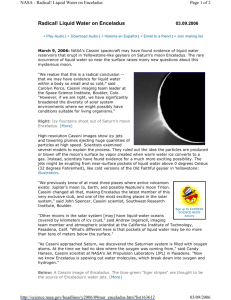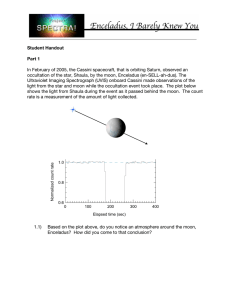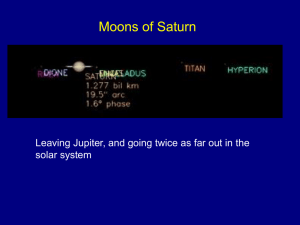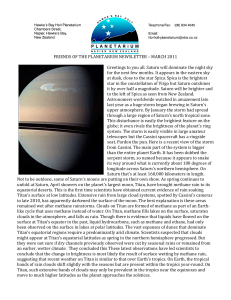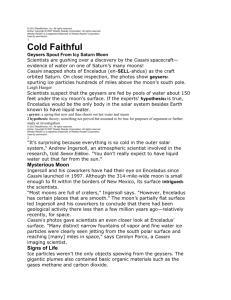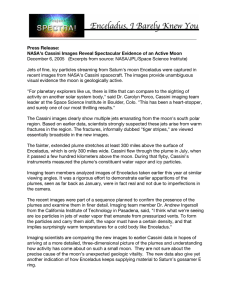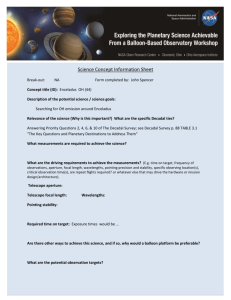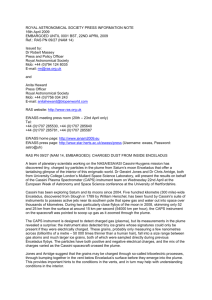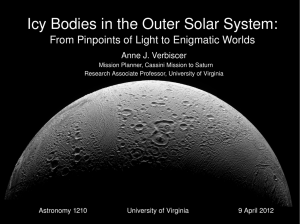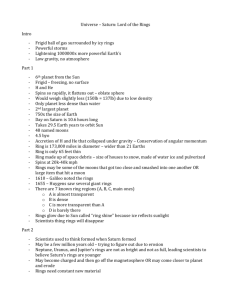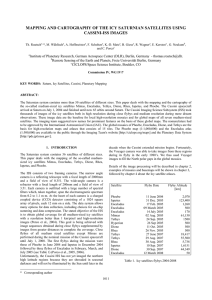Cold Faithful
advertisement
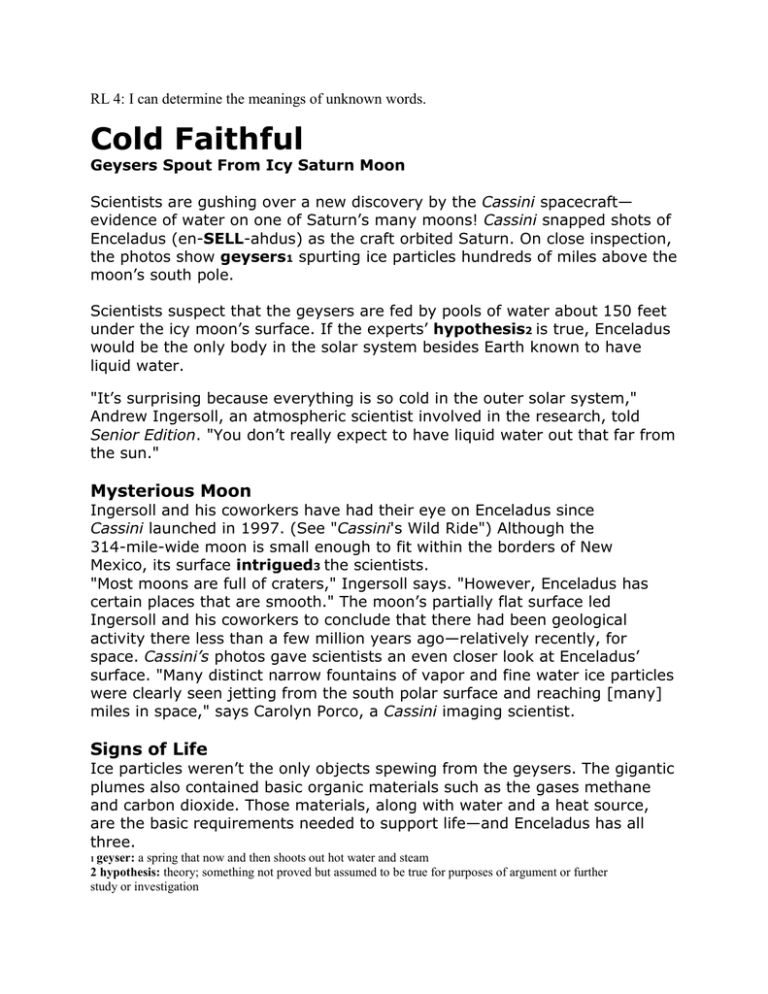
RL 4: I can determine the meanings of unknown words. Cold Faithful Geysers Spout From Icy Saturn Moon Scientists are gushing over a new discovery by the Cassini spacecraft— evidence of water on one of Saturn’s many moons! Cassini snapped shots of Enceladus (en-SELL-ahdus) as the craft orbited Saturn. On close inspection, the photos show geysers1 spurting ice particles hundreds of miles above the moon’s south pole. Scientists suspect that the geysers are fed by pools of water about 150 feet under the icy moon’s surface. If the experts’ hypothesis2 is true, Enceladus would be the only body in the solar system besides Earth known to have liquid water. "It’s surprising because everything is so cold in the outer solar system," Andrew Ingersoll, an atmospheric scientist involved in the research, told Senior Edition. "You don’t really expect to have liquid water out that far from the sun." Mysterious Moon Ingersoll and his coworkers have had their eye on Enceladus since Cassini launched in 1997. (See "Cassini's Wild Ride") Although the 314-mile-wide moon is small enough to fit within the borders of New Mexico, its surface intrigued3 the scientists. "Most moons are full of craters," Ingersoll says. "However, Enceladus has certain places that are smooth." The moon’s partially flat surface led Ingersoll and his coworkers to conclude that there had been geological activity there less than a few million years ago—relatively recently, for space. Cassini’s photos gave scientists an even closer look at Enceladus’ surface. "Many distinct narrow fountains of vapor and fine water ice particles were clearly seen jetting from the south polar surface and reaching [many] miles in space," says Carolyn Porco, a Cassini imaging scientist. Signs of Life Ice particles weren’t the only objects spewing from the geysers. The gigantic plumes also contained basic organic materials such as the gases methane and carbon dioxide. Those materials, along with water and a heat source, are the basic requirements needed to support life—and Enceladus has all three. 1 geyser: a spring that now and then shoots out hot water and steam 2 hypothesis: theory; something not proved but assumed to be true for purposes of argument or further study or investigation "If we’re right, we think we’re looking at [an] environment in the solar system [besides Earth] where we have liquid water and the potential for living organisms," Porco told reporters. Scientists say that if the moon could support life, the creatures probably would live under its surface, near the water. The life-forms most likely wouldn’t have anything in common with Marvin the Martian. "[They] would be the most simple forms of life imaginable—bacteria," Ingersoll says. Future Explorations Scientists will have plenty of time to wonder. Cassini isn’t scheduled to fly by Enceladus again until spring 2008. Until then, the probe will continue to photograph and monitor the geysers from a distance. "There’s no question, along with [Saturn’s] moon Titan, Enceladus should be a very high priority for us" in future space missions, Jonathan Lunine, a Cassini scientist at the University of Arizona, told the Los Angeles Times. "Saturn has given us two exciting worlds to explore." Cassini's Wild Ride Enceladus’ geysers aren’t Cassini’s only claim to fame. The bus-sized space probe is in the process of orbiting Saturn 76 times. Using five telescopes, the probe is taking 300,000 images of the planet, its 47 known moons, and its rings. Cassini is also collecting space particles and measuring conditions such as temperature. The space probe’s 11-year journey is set to finish in 2008. 3 intrigued: interested; made curious 1. Which of the following is a hypothesis? a. Water is hydrogen oxide b. The geysers on Enceladus are fed by pools of water 150 feet under the icy moon’s surface. c. New York City is in the State of New York. d. It snowed this year in January. 2. Gushing as used in the sentence, “Scientists are gushing over a new discovery by the Cassini spacecraft,” means: a. to find evidence of water. b. to study ice particles. c. to make an exaggerated display of enthusiasm. d. to take a closer look. 3. Finish the sentence: After she saw the elephant, she was intrigued and a. took a closer look. b. ran away. c. hid behind a bush. d. went to buy herself popcorn. 4. Under the section, “Signs of Life,” the author writes, “The gigantic plumes also contained....” In this sentence plumes means a. the atmosphere of Enceladus. b. moons that orbit Saturn. c. Saturn's outer ring. d. material coming from the geyser. 5. What form of life do scientists think likely to exist on Enceladus, and if there is life there, where on Enceladus would they expect it to be found? _____________________________________________________________ _____________________________________________________________ _____________________________________________________________ _____________________________________________________________ _____________________________________________________________ _____________________________________________________________ _____________________________________________________________ _____________________________________________________________ _____________________________________________________________ _____________________________________________________________ _____________________________________________________________ _____________________________________________________________ _____________________________________________________________
